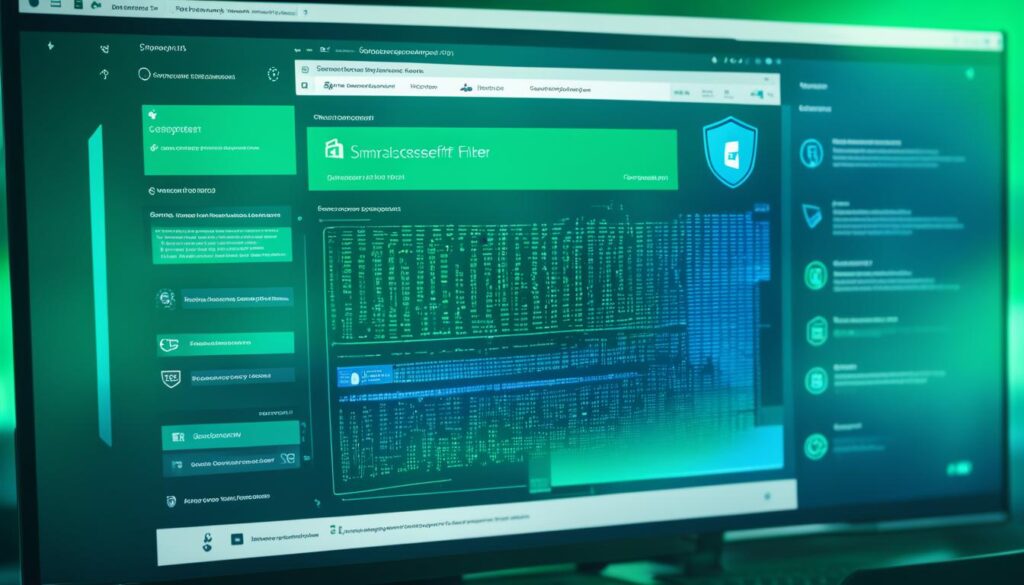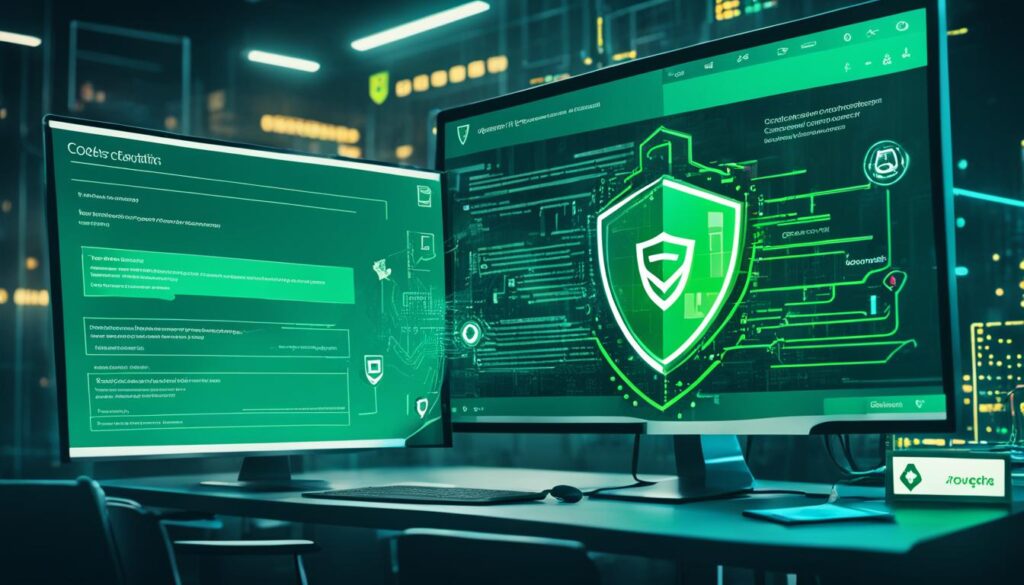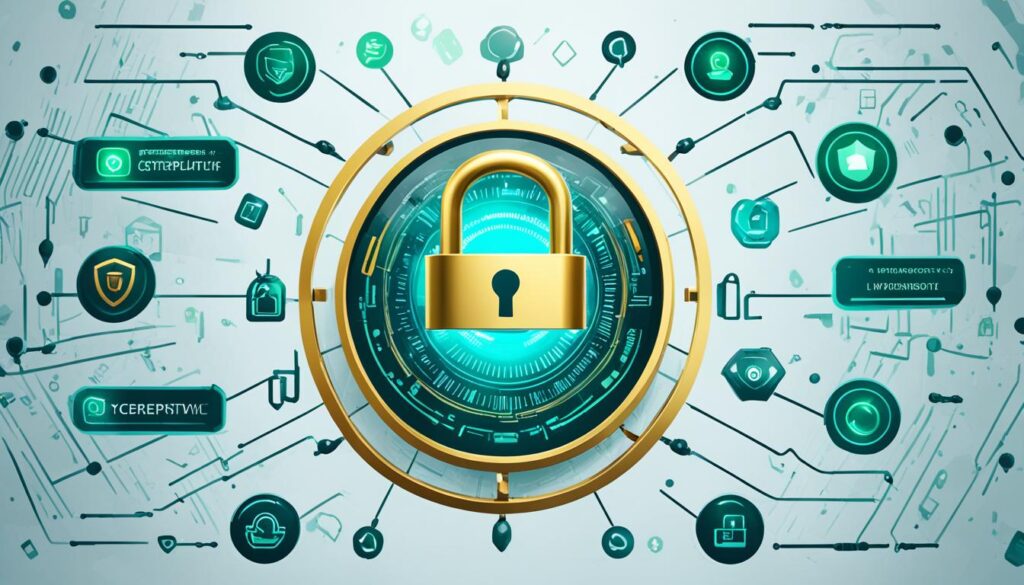In an age where nearly 230,000 malware samples are produced every day and the subsequent threat to digital security looms ever larger, secure code signing certificates stand as the vanguard of software integrity and trustworthiness. As cybercriminals constantly evolve their tactics, it’s essential for developers and organizations to utilize trusted code signing certificates to ensure that their applications are safeguarded against unauthorized tampering and establish a reputable digital footprint.
Respected reseller SignMyCode is at the forefront of this battle, securing an arsenal of digital certificates that shield code signing for Windows, macOS, iOS, and Android platforms. In an environment where each alteration could spell disaster, these certificates are not just about security – they are about building user trust and ensuring the software ecosystem remains uncontaminated and pure.
Whether you’re a solo developer looking to distribute your latest app or a large enterprise managing a vast software suite, understanding which code signing certificates best fit your platform-specific needs is paramount. Let’s delve into the intricacies of various providers and uncover the features that set them apart, so developers can make informed decisions that resonate with both current cyber-security demands and the expectations of an increasingly discerning user base.
Key Takeaways
- The pressing need for secure code signing certificates in today’s high-threat digital landscape.
- SignMyCode’s pivotal role in offering digital certificates for top platforms, enhancing software security.
- Distinguishing between code signing providers to bolster defense against modifications and malware risks.
- Understanding platform-centric requirements for code signing, from Windows to Android.
- Building a foundation of trust with users through verifiable and untampered software distribution.
- Aligning choice of code signing certificates with developers’ unique needs for efficacy and affordability.
Understanding the Importance of Code Signing Certificates
In today’s interconnected world, ensuring the security and integrity of software is a paramount concern for developers and users alike. Code signing certificates play a crucial role in maintaining the software integrity, boosting user trust, and guaranteeing software authenticity. By exploring what code signing certificates are and their role in software security, it becomes evident why they are indispensable in the digital realm.
What is a Code Signing Certificate?
A code signing certificate is a digital passport for software developers, confirming identity and securing code with a trusted digital signature. It acts as a virtual seal of approval, indicating that the software has not been tampered with since its original distribution. This assurance of integrity is a cornerstone of establishing trust between software providers and users, where concerns of compromised data and malware are ever-present.
The Role of Code Signing in Software Security
Code signing serves a dual purpose in reinforcing software security: it deters attackers from injecting harmful code by breaking the signature, and it aids in authenticating the source of the software. The digital signature attached to the software reassures users that the code they’re about to execute comes from a recognized and verified source, thus preventing the spread of malicious software disguised as legitimate applications.
Benefits of Code Signing for Developers and Users
For developers, a code signing certificate is akin to an endorsement of their software’s legitimacy. It minimizes the occurrence of ominous security warnings and encourages a smoother installation process thereby fostering more widespread user adoption. Users are afforded peace of mind, knowing that any software signed by a legitimate developer is authentic and has not undergone any unauthorized modifications since its signing. This trust is further bolstered with timestamping, which asserts when the software was signed, providing an additional layer of reliability.

| Element | Role in Code Signing | Impact on Stakeholders |
|---|---|---|
| Digital Signature | Confirms the software’s origin and integrity | Ensures developers’ credibility and users’ confidence in the software |
| Identity Verification | Asserts the legitimacy of the software publisher | Builds a reputable brand image among users |
| Security Warnings Reduction | Alleviates browser and operating system warnings | Facilitates easier and safer installation for users |
| SmartScreen Application Reputation | Boosts software standing in screening processes | Accelerates user acceptance and market penetration |
| Timestamping | Verifies when the software was digitally signed | Provides temporal authenticity, lasting beyond certificate expiration |
Types of Code Signing Certificates
As a developer, it’s essential to comprehend the varied categories of code signing certificates available to enhance your software’s security and integrity. Depending on whether you work individually or within an organization, different types of certificates meet your unique requirements in authenticating and securing your code.
Individual vs. Organization Code Signing Certificates
Individual Code Signing Certificates provide independent software programmers the ability to sign their creations with a trusted digital signature, associating their personal identity with the code. In contrast, Organization Code Signing Certificates are crafted for companies, enabling them to sign their software with an encryption linked to the corporate identity. This distinction critically defines the level of trust and verification associated with the signed application.
Distinguishing Between OV and EV Code Signing Certificates
When delving deeper into organization-level options, OV Code Signing Certificates and EV Code Signing Certificates emerge as specialized choices. OV, or Organization Validation Certificates, require a moderate level of validation where the certificate authority verifies the legitimacy of the organization applying for the certificate. On the other hand, EV, or Extended Validation Certificates, require a stricter verification process and offer the highest level of trust and assurance to users, with additional benefits like immediate reputation with Microsoft SmartScreen filter.
| Feature | Individual Code Signing Certificate | OV Code Signing Certificate | EV Code Signing Certificate |
|---|---|---|---|
| Intended For | Independent Developers | Organizations/Companies | Organizations/Companies |
| Validation Level | Basic Identity Verification | Organizational Verification | Extended Organizational Verification |
| Browsers and OS Recognition | Widely Recognized | Widely Recognized | Highly Recognized with Extra Trust Features |
| SmartScreen Filter Reputation | Builds Over Time | Builds Over Time | Immediate Trust upon First Download |
| Use Case | Signing smaller software distributions | Signing software for established organizations | Signing software requiring high levels of trust and security |

Key Features of Secure Code Signing Certificates
When we talk about the protection and credibility of software, secure code signing certificates stand as the unspoken heroes. They uphold code integrity and fortify digital trust, ensuring that every application or program a user encounters is safe and unaltered from its original form.
Timestamping and Its Significance
The power of timestamping cannot be overstated when it comes to code signing. By enforcing a timestamp when code is signed, the validity of that signature extends beyond the expiration date of the certificate itself. This means that software remains trusted and verifiable long-term, making timestamping a key attribute in the quest for code integrity assurance.

Microsoft Smartscreen Filter and Its Advantages
Microsoft SmartScreen Filter is a renowned defender against phishing and malware, scrutinizing downloaded software to protect users from malicious content. By integrating digital certificates with SmartScreen, developers drastically enhance their software’s reputation, enabling smoother installations and earning trust faster than those without such verification.
Moreover, these certificates are more than just security features; they embody an assurance to users that the applications adhere to stringent safety measures. Such reassurances are pivotal in today’s digital landscape where user confidence is critical. With digital certificates, developers do not just offer an application, but a promise of integrity and reliability.
- Ensure ongoing software trustworthiness with timestamping
- Double reputation rate through Microsoft SmartScreen Filter
- Unlimited digital content signing for continuous assurance
- Mark software as verified and trusted to diminish security alerts
In conclusion, these key features of secure code signing certificates lay the foundation for a relationship based on trust between software developers and their users, bolstering security and confidence with every download.
Code Signing Certificates for Different Platforms
The digital landscape is an intricate web of diverse platforms, each serving as a cornerstone for application development. Ensuring the security and integrity of software across these various environments, code signing certificates emerge as the linchpin for developers aiming to establish unfaltering trust among users. As the technological realms of Windows, macOS, iOS, and Android continue to evolve, the implementation of platform-specific code signing certificates becomes imperative.
Code signing certificates for different platforms have become an industry standard, as they offer unique security solutions tailored to meet the varied requirements of each operating system. These certificates play a crucial role in maintaining software sanctity—preventing tampering and affirming the identity of the software publisher.
- Code signing certificates for Windows fortify the software’s credibility by dovetailing with Microsoft’s development frameworks and enhancing SmartScreen Filter reputation scores.
- Code signing certificates for macOS vouch for software safety, thus aligning with Apple’s stringent Gatekeeper security protocols.
- Code signing certificates for iOS are paramount in assuring the integrity of applications on the App Store, instilling customer confidence in an environment known for its robust security measures.
- Code signing certificates for Android provide the shield of authenticity sought by users downloading apps from the Google Play Store and other sources.
Below is an encompassing view of how these certificates play an essential role across different platforms:
| Platform | Key Benefits | Applicable Certificate Types |
|---|---|---|
| Windows | Enhanced SmartScreen reputation, reduced security prompts | OV, EV |
| macOS | Satisfies Gatekeeper requirements, ease of app acceptance | Developer ID |
| iOS | Mandatory for App Store submission, provides app security | iOS Distribution |
| Android | Essential for app integrity, required by Google Play | Android App Sign |
The adaptation of these security measures is more than just a compliance checkpoint; it is a testament to a developer’s commitment to safeguarding user interests. By integrating code signing certificates for different platforms, the software industry is taking measurable steps towards a safer digital ecosystem.
Selecting the Best Code Signing Certificates
With a multitude of options available in the market, selecting the best code signing certificates can be a daunting task. Every software developer’s priority is to ensure the integrity and reputation of their software, which is where reliable certificates play a critical role. In this segment, we will delve into the criteria that should guide your selection process and the esteemed certificate authorities that you can trust.

Criteria for Choosing the Right Certificate for Your Needs
When deciding on the appropriate code signing certificate, it is essential to factor in the type of software you are developing, the size of your user base, and the level of security you aspire to provide. Whether it is an OV, EV, or Individual certificate, each serves a distinct purpose and provides different levels of validation and trust.
- OV certificates, ideal for organizations looking to establish a baseline of trust
- EV certificates, offering the highest level of security and user trust
- Individual certificates, suited for independent developers and small-scale software publishers
Compatibility with various platforms is also a non-negotiable aspect, as is an easy-to-navigate issuance process and transparent pricing structures. Taking these into account will streamline your search for the certificate that best aligns with your software’s requirements.
Evaluating Certificate Authorities for Quality
The reliability of a code signing certificate is as good as the reputation of the issuing certificate authority. Renowned trusted certificate authorities like Sectigo, DigiCert, and Certera have established themselves as pillars of security in the digital certificate landscape. Here’s a concise comparison table to assist you in assessing these industry staples:
| Certificate Authority | Types of Certificates Offered | Validation Required | Customer Support Rating |
|---|---|---|---|
| Sectigo | OV, EV, Individual | Comprehensive verification process ensuring high trust | Extensive with multiple support channels |
| DigiCert | OV, EV | Stringent, tiered validation for different certificates | 24/7 expert support with an emphasis on customer satisfaction |
| Certera | OV, Individual | Basic to moderate validation, depending on the certificate type | Targeted support with a focus on developer needs |
The above table highlights key factors including the types of certificates each CA offers, the required validation steps for issuance, and the level of customer support you can expect. Be it Sectigo’s comprehensive verification processes, DigiCert’s round-the-clock expert assistance, or Certera’s developer-focused support system, the deciding factor will invariably balance your specific needs with each providers’ offering.
Keep these criteria in mind, and you will find a code signing certificate that not only secures your software but also fortifies your users’ trust in your digital offerings.
Code Signing on Windows: Enhancing Software Trust
For developers and publishers in the software industry, establishing a solid reputation on the Windows platform is a critical step towards ensuring that users can trust and comfortably use their offerings. One of the pivotal components for building this trust is the utilization of code signing certificates for Windows. These not only secure the application but also significantly boost the SmartScreen Application Reputation, a key consideration for users during installation.

Boosting SmartScreen Application Reputation
By digitally signing their applications, developers can reap the benefits of an enhanced SmartScreen Application Reputation. This reputation system is designed to alert users before running unrecognized programs downloaded from the internet. Code signed applications tendentiously face fewer interruptions, as SmartScreen assesses that the apps come from a source of higher integrity. Subsequently, the SmartScreen Application Reputation offers an added layer of protection and instills user confidence, thereby streamlining the user experience during the download and installation process.
Requirements for Windows Kernel Mode Signing
In the domain of Windows system-level software, developers face stringent requirements that necessitate Windows kernel mode signing. Compliance with these requirements is non-negotiable for any software that integrates deeply with the Windows operating system. Certificates that validate this level of integrity are pivotal, and only those carrying Organizational Validation (OV) or Extended Validation (EV) credentials are accepted for such tasks. The table below outlines the specifics and contrasts between these two types of certificates in the context of kernel mode signing:
| Feature | OV Code Signing Certificate | EV Code Signing Certificate |
|---|---|---|
| Verification Level | Confirms organizational identity | In-depth organization vetting; immediate reputation with SmartScreen |
| Use Case | Suitable for most software types | Required for kernel mode drivers and system-level software |
| SmartScreen Advantage | Improved reputation over time | Expedited reputation building; fewer user warnings |
| Private Key Handling | Stored on developer’s chosen hardware | Stored on an external hardware token for security |
Aligning with these Windows kernel mode signing provisions infers developers’ commitment to maintaining the highest standards of integrity, subsequently nurturing user trust in their software. In conclusion, providing your Windows software a fortified layer of trust through proper code signing is instrumental in establishing a reliable reputation and ensuring a seamless user experience.
Optimizing Code Signing for macOS and iOS
As the digital realm continues to evolve, the significance of solidifying code signing for macOS and iOS platforms grows in tandem, with developers seeking to align their software delivery with increased security measures. Attaining an Identified Publisher Status not only elevates the stature of applications within the Apple ecosystem but also ensures adherence to rigorous expectations set forth by Apple technical specifications.
Importance of Identified Publisher Status on Apple Devices
Acquiring Identified Publisher Status via code signing certificates for macOS and iOS is paramount. This status acts as a cornerstone for reinforcing the reliability and integrity of software being distributed on Apple’s platform, fostering a sense of trust and security amongst the user base.
Choosing Certificates Supporting Apple’s Technical Specifications
To uphold the integrity of software systems and to provide a seamless user experience, selecting code signing certificates compliant with Apple’s technical specifications is crucial. These standards are meticulously crafted to protect both the developer’s intellectual property and the end-user’s data security.
It’s important to note that not all code signing certificates are created equal; variations in recognition and features make certain certificates more suited for Apple devices. Below, find a comparison table highlighting key aspects of code signing certificates ideal for macOS and iOS:
| Feature | macOS Certificate | iOS Certificate |
|---|---|---|
| Platform Compatibility | Designed specifically for macOS software | Optimized for software on iOS devices |
| Security Level | High assurance with strong encryption | Strong encryption similar to macOS |
| Identified Publisher Status | Yes | Yes |
| Apple Technical Specifications Alignment | Compliant to promote smooth App Store submissions | Compliant for secure app distribution through the App Store |
| Reputation Impact | Boosts credibility and user trust | Crucial for user acceptance and trust in the app |
| Revocation Check | Dynamic status checks for maintaining credibility | Immediate revocation status verifications |
The table underscores the imperative nature of selecting the right code signing certificates, one that embodies trust, and manifests compatibility with both code signing certificates for macOS and iOS platforms in line with Identified Publisher Status and Apple technical specifications.
Securing Android Applications with Trusted Code Signing Certificates
In an age where digital security is non-negotiable, Android developers are increasingly vigilant in protecting their applications. The adoption of trusted code signing certificates for Android has become a crucial cornerstone in the quest to solidify app security and user assurance. By instilling an unassailable layer of authentication, these certificates play a pivotal role in upholding the sanctity of the software, allowing users to engage with mobile applications without trepidation.
Establishing Reputation in the Android Ecosystem
An exemplary reputation within the Android ecosystem is paramount for application success. Code signing certificates operationalize this precisely by bridging the gap between security and trust. With such certificates in place, developers gain not just the peace of mind that their creations are shielded against tampering but also leverage the elevated esteem that comes with verifiable integrity. Securing Android applications with indubitable credentials bolsters user confidence and significantly amplifies the appearance of reliability in the crowded marketplace.
Understanding the Technical Needs for Android Code Signing
Android’s diverse and elaborate platform demands a tailored approach to code signing. Developers must navigate these technicalities to implement certificates that meet Google’s stringent criteria without hindrance. The certificates not only need to ensure compatibility across the multitude of Android versions and devices but also grant seamless updates and installation processes. By mastering the technical needs of Android code signing, developers authenticate their software’s origin and maintain a pristine user experience, fostering a reputation of unwavering trust amidst Android’s global user base.
FAQ
What is a Code Signing Certificate?
A code signing certificate is a digital certificate that authenticates the identity of the software publisher and ensures that the code has not been altered or compromised after it was signed. It is crucial for maintaining software integrity and user trust.
The Role of Code Signing in Software Security?
Code signing plays a critical role in software security by verifying the source and integrity of the software. It prevents unauthorized modifications, establishes software authenticity, and assures users that the software is safe to install.
Benefits of Code Signing for Developers and Users?
For developers, code signing enhances the credibility of their software, reduces security warnings, and contributes to a better reputation with services like Microsoft’s SmartScreen Filter. For users, it provides confidence that the software they download and install is genuine and secure.
Individual vs. Organization Code Signing Certificates?
Individual code signing certificates are best suited for independent developers looking to sign digital content with their personal credentials. Organization code signing certificates are ideal for businesses, linking the certificate to the company’s identity and often fulfilling more rigorous validation requirements.
Distinguishing Between OV and EV Code Signing Certificates?
Organization Validation (OV) certificates verify that the organization is legally registered and is the rightful owner of the domain. Extended Validation (EV) certificates provide a higher level of security, with more stringent validation processes and visible indicators like the green address bar.
Timestamping and Its Significance?
Timestamping records the time when the code was signed. This ensures that the signature remains valid and trusted after the code signing certificate itself has expired, provided that the code remains unchanged after signing.
Microsoft SmartScreen Filter and Its Advantages?
The Microsoft SmartScreen Filter is a security feature that helps protect users from phishing and malware. Code signing certificates that integrate with SmartScreen Filter can build a higher reputation quickly, reducing security warnings and increasing user trust.
Criteria for Choosing the Right Certificate for Your Needs?
When selecting a code signing certificate, consider the type of certificate (OV, EV, individual), compatibility with the intended platform(s), pricing, implementation ease, and support options. It’s essential to balance security needs with budget constraints.
Evaluating Certificate Authorities for Quality?
Look for certificate authorities with a strong industry reputation, like Sectigo, DigiCert, or Certera. Evaluate their encryption standards, security solutions, customer support, issuance time, and adherence to validation requirements.
Boosting SmartScreen Application Reputation?
To boost SmartScreen Application Reputation on Windows, developers should use code signing certificates to establish a trusted publisher identity. This can lead to fewer security warnings during the application installation process.
Requirements for Windows Kernel Mode Signing?
Windows kernel mode signing requires OV or EV certificates to verify the software publisher’s identity. EV certificates are often necessary for hardware drivers and more sensitive applications to meet Windows’ security standards.
Importance of Identified Publisher Status on Apple Devices?
On Apple devices, Identified Publisher Status is key for user trust and uninterrupted software use. Code signing certificates that establish this status mark the software as authentic and secure in the macOS and iOS ecosystems.
Choosing Certificates Supporting Apple’s Technical Specifications?
It is important to choose code signing certificates that meet Apple’s technical specifications to ensure that applications run smoothly and securely on macOS and iOS platforms. This includes compatibility with Apple’s Gatekeeper and other security mechanisms.
Establishing Reputation in the Android Ecosystem?
Trusted code signing certificates help in establishing a developer’s reputation in the Android ecosystem. They assure users that the application they are installing is reputable and hasn’t been tampered with.
Understanding the Technical Needs for Android Code Signing?
The technical needs for Android code signing include using a certificate that complies with the Android application signing requirements, offering assurance of the software’s integrity, and ensuring the publisher’s identity is verified.


